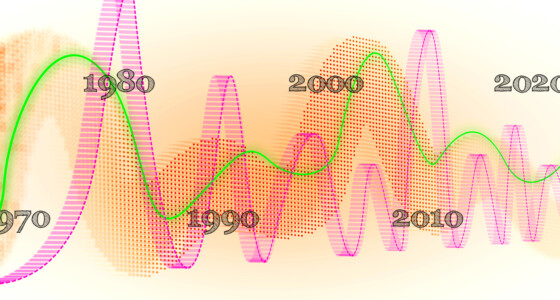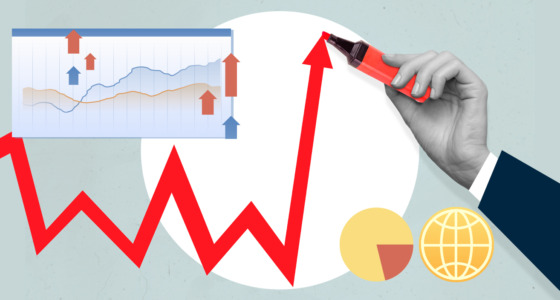

Algorithmic trading is widely used by traders, as it allows them to open positions faster and more often than a human trader can do. According to Coalition Greenwich, 12 leading investment banks earned around $2 bn from algorithmic portfolio trading in 2020. However, if algorithmic trading is highly efficient and provides a wider range of opportunities, why hasn’t it replaced human trading? Are there drawbacks or risks? Let’s determine whether algorithmic trading strategies really work.
Introduction to algorithmic trading strategies
Algorithmic trading, also known as automated trading, algo-trading, or black-box trading, is based on a computer program that follows written instructions to place a trade. It allows you to open more trades at a faster rate, as the program can scan market opportunities in several markets simultaneously. Moreover, trades are open automatically as soon as the system determines certain conditions.
The program carries out trades based on timing, asset price, quantity, or a mathematical model. Algorithmic trading provides markets with higher liquidity and makes trading systematic, as it isn’t affected by human emotions.
Benefits and drawbacks
Algorithmic trading is incredibly beneficial. Why isn’t trading fully automated then? Let’s consider the advantages and drawbacks of this approach.
Advantages
- Trades are supposed to be executed at the best prices.
- As trades are placed instantly and accurately, the chances of execution without delays increase.
- Algo-trading allows traders to reduce transaction costs.
- A program can simultaneously analyze market conditions on numerous timeframes and in various markets.
- It limits mistakes caused by emotions or psychological factors. Mostly, unsuccessful trades occur due to trader emotions. Traders either close positions earlier because of fear of losing funds or keep them longer because of greed.
- There is no human factor. Some inexperienced traders can make a mistake when opening a trade.
- The program can be tested on historical and real-time price data to measure the effectiveness of the strategy.
Drawbacks
- As algorithmic trading is based on a computer program, you should know the programming language. If you don’t know it, you won’t be able to create your own program. You can buy it from another trader or ask a programmer to create it for you. Still, it may cost a lot.
- Although algorithmic trading is expected to limit the number of mistakes, they may still occur if the program is poorly written. In 2018, the Nifty Index plunged by around 900 points in a few seconds and fully recovered only by the end of the day. In market crashes, algorithmic trading triggers stop-loss orders of open positions, which raises the selling pressure.
- Algorithmic trading is strictly regulated in some countries. For instance, it was allowed by the Securities and Exchange Board of India (SEBI) in 2008. However, in 2021, SEBI started consultations regarding concerns over algorithmic trading by retail investors.
- Although the computer program can monitor market conditions in various markets, not every program is effective in those markets. You should be sure that instructions suit the high volatility of the stock market or the low liquidity of exotic pairs.
- As algorithmic trading works via a program, you should have a computer that will be able to launch it. Also, you should have a high-speed and solid internet connection, as an issue with your connection won’t allow the program to execute a trade.

Algorithmic tradingstrategies and their rationale

You should remember that there are no 100% successful strategies. However, there are ones that have confirmed their effectiveness in many trades. Below, you will find the most common types of algorithmic trading strategies, which are based on standard trading approaches.
1. Trend
Trend strategies are the most common and easiest techniques that can be applied via algo-trading. A program doesn’t need to look for a signal on the price direction, as trades are placed based on the current trend. Most algorithmic trading strategies are based on moving average, MACD, and RSI indicators, as well as breakouts.
2. Trading range
A trading range or mean reversion strategy is built on the idea that the price always returns to its mean (average) value no matter how high or low it is. An algorithm identifies and defines the price range and places a trade when the asset price breaks in or out of it.
3. Arbitrage
Arbitrage trading is widely used in stock and futures markets. A trader purchases a dual-listed stock at a lower price in one market and sells it at a higher price in another. It’s also possible to buy stocks and sell futures instruments. It may be complicated to determine price differentials on your own. Algorithmic trading can make this fast and place trades at the best execution prices.
4. Percentage of volume
The algorithm keeps sending partial orders before the trade order is fully filled. Partial orders depend on the predefined participation ratio and the volume traded in the markets. There is a “steps strategy” that continues sending orders at a user-defined percentage of market volumes and raises or reduces the participation rate when the asset price reaches user-defined levels.
5. Time-weighted average price
This strategy implies breaking a large order into smaller ones and releasing them to the market. The releases are based on evenly divided time slots between a start and end time. The strategy aims to execute the order at or near the average price between the start and end times. This allows traders to reduce market impact.
Final thoughts
Algorithmic trading is a promising approach that may reduce the time that a trader must spend on trades and increase the chance of successful trades. It includes algorithmic trading strategies based on standard techniques, which makes it more effective. However, it has significant drawbacks you should always remember to limit the risks of losing funds.
Disclaimer: No strategy can guarantee 100% correct outcome of the trade.








